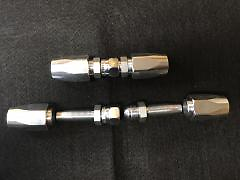Car repairs are very important to the maintenance of your vehicle. There have to do with 6 different vehicle elements that use some kind of fluid, and each of these fluids must be examined occasionally. Often there may be a sluggish leakage, which can trigger issues even more along if anything has dripped out of the system. Oil is used as a lube for the within the engine. It is vital because it keeps the metal parts of the engine lubed and clean, so it is necessary to keep the oil fresh and renewed. On most cars, oil changes need to be arranged every 5,000 miles, however, the vehicle owner can inspect the oil level, and it’s color by merely having a look at the dipstick at any time. See BOA NZ know more about it.
The oil dipstick is a direct line to the oil tank, it is marked with a suitable level, and the oil must fall within those areas; the lube may need to be renewed if it falls listed below the indication marks. It is best to examine the oil levels while the car is cool to prevent an incorrect reading. While the engine is cool, it is also great to inspect the antifreeze; antifreeze distributes through the cooling system and keeps the engine from freezing or getting too hot. Examining the antifreeze is as easy as taking a look at the tank, which sits beside the radiator.

The hydraulic fluids for the brakes and guiding wheel also can be found in a tank beneath the hood, however, they can be examined while the engine is hot or cold. Brake fluid levels must never change, it is just used as a hydraulic to move energy to the brakes; have an auto service technician look for leakages if the tank is low. Power guiding fluid transfers power through the steering lines, and ought to be filled up if the guiding wheel ends up being hard to turn; a low tank will ultimately do significant damage to the steering. The tank is also found under the hood and is clearly marked with the proper levels for a hot or cold engine. The transmission fluid needs to just be inspected if the engine is running. Comparable to oil, a dipstick goes straight to the transmission tank; it is also marked for the proper fluid levels.
Examining Several Airplane Flexing.
Normally, if a hosepipe flexes in more than one airplane then it subsequently twists its wire support. This twisting can be eventful for the pipes as 5 degrees of twist can subtract 70% of service life while a 7-degree twist can wind up decreasing the life span by 90%. Ineffective hose-assembly choice and routing result in several airplane flexing. In case the hose pipe goes through the machine or actuator motion, insufficient and incorrect securing too can be a factor for several airplane flexing.
Preserving appropriate fluid levels is an easy job that can avoid significant car repairs. Inspecting a vehicle’s fluids frequently can assist keep its systems in leading working order, and if these fluids require regular refills, contact a mechanic to be sure there are no leakages. Leaking tubes can trigger significant damage and car repairs.

